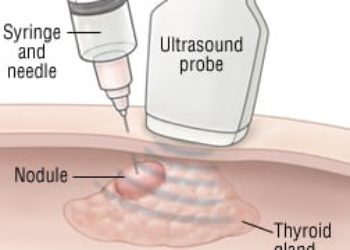Routine confirmatory testing for primary aldosteronism may have low diagnostic value
1. In this study which investigated the diagnostic accuracy of confirmatory testing for primary aldosteronism, post-seated saline suppression test aldosterone concentrations overlapped between treatment responders and non-responders.
2. The positive and negative likelihood ratios were equivocal across various aldosterone cutoffs despite accounting for laboratory assay, differences in treatment, and occurrence of hypokalemia.
Evidence Rating Level: 2 (Good)
Study Rundown: Primary aldosteronism (PA), or Conn’s syndrome, is the most remediable cause of secondary hypertension and accounts for up to one-third of all cases of hypertension worldwide. Despite significant complications of untreated hypertension such as cardiovascular, renal, and metabolic comorbidities, less than 1% of patients with PA are diagnosed and treated due to lack of awareness and barriers associated with a complex diagnostic pathway. Initial screening for PA involves obtaining an aldosterone-renin ratio (ARR), and individuals with an elevated ARR then undergo confirmatory testing, which encompasses various methods including the seated saline suppression test (SSST) and the captopril challenge test (CCT). Individuals with confirmed diagnoses of PA then undergo adrenal vein sampling for lateralization and those with lateralizing PA are offered surgical removal of the culprit adrenal gland, whereas those with non-lateralizing PA are treated with a mineralocorticoid receptor antagonist (MRA). Previous studies have called into question the accuracy of confirmatory tests for PA, but they have been limited by their retrospective design and inconsistent use of a gold standard for comparison. Hence, this clinical trial was designed to assess the accuracy of the SSST using treatment response as the reference standard. In the study, the post-SSST aldosterone concentrations were similar between treatment responders and non-responders. Moreover, the positive and negative likelihood ratios were similar for a range of aldosterone thresholds even after accounting for laboratory assay, differences in treatment, and occurrence of hypokalemia. The study was limited by a study population consisting of few non-responders which may have biased test performance. Overall, these results suggested that confirmatory testing of primary aldosteronism using the SSST may have low utility and interfere with timely treatment.
Click to read the study in AIM
Relevant Reading: Performance of confirmatory tests for diagnosing primary aldosteronism: a systematic review and meta-analysis
In-Depth [prospective cohort]: This clinical trial investigated the performance of the SSST in confirming a diagnosis of PA using treatment response as the reference standard. Patients with hypertension and an elevated ARR with clinical suspicion for PA were considered for inclusion. The SSST was performed via intravenous infusion of 2 liters of normal saline over 4 hours. Immunoassay and liquid chromatography-tandem mass spectrometry (LC-MS) were used to measure patient aldosterone levels. Treatment response encompassed decreases in blood pressure, a reduction of antihypertensive dose, and normalization of the ARR and hypokalemia. Positive and negative likelihood ratios were estimated with 95% confidence intervals (CIs) according to saline-suppressed aldosterone thresholds ranging from 140 to 300 pmol/L for immunoassay and 60 to 300 pmol/L for LC-MS. Among a total of 156 individuals with a positive screen, 89 (57.1%) underwent surgery and 67 (42.9%) underwent pharmacologic therapy. The mean age was 53.4 years with a mean blood pressure of 143/80 mmHg. A total of 142 individuals (91.0%) responded to treatment and 14 (9.0%) did not. By immunoassay, the median post-SSST aldosterone concentration was 329 pmol/L (interquartile range [IQR], 227 to 525 pmol/L) for treatment responders and 255 pmol/L (IQR,162 to 346 pmol/L) for non-responders. A similar overlap was observed with LC-MS, with median post-SSST aldosterone levels of 203 pmol/L (IQR, 103 to 356 pmol/L) and 106 pmol/L (IQR, 87 to 248 pmol/L), respectively. The SSST was unable to discriminate between treatment responders and non-responders using immunoassay (area under the curve, 62.1% [95% CI, 45.1% to 79.1%]) nor LC-MS (area under the curve, 62.9% [95% CI, 46.8% to 79.0%]). In summary, this study showed poor performance of the SSST as a confirmatory test for PA.
Image: PD
©2025 2 Minute Medicine, Inc. All rights reserved. No works may be reproduced without expressed written consent from 2 Minute Medicine, Inc. Inquire about licensing here. No article should be construed as medical advice and is not intended as such by the authors or by 2 Minute Medicine, Inc.









